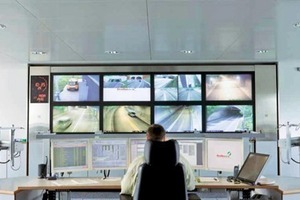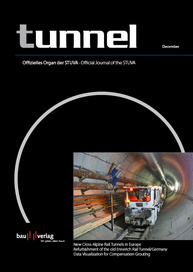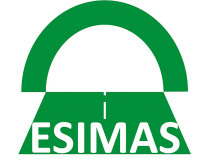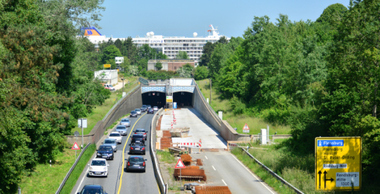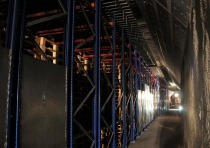Considering Needs of the Disabled when Furnishing and Operating Road Tunnels
The assurance and (constant) improvement of safety in road tunnels represents an important and generally recognised goal in Germany. This applies to a particular extent to taking the needs of disabled persons in road tunnels into account as is shown in the following report.
Starting Situation
The improving of mobility for the disabled and other persons with impaired movement in public transportation was already regarded as an important task in Germany prior to the ratification of the UN convention governing the rights of the disabled. Thus through amending the Federal Highways Act (FStrG) in conjunction with the passing of the Federal Act on Equal Opportunities for the Disabled (BGG) the aim was pursued to attain far-reaching accessibility for federal highways including road tunnels. Furthermore in keeping with the EU Guideline 2004/54/EU from April 29th, 2004 governing the minimum requirements for tunnels on the trans-European highway network, special emphasis is placed on the requirements of disabled persons for using the safety facilities in road tunnels.
The assurance and (constant) improvement of safety in road tunnels represents an important and generally recognised goal in Germany. This is shown through making corresponding funds available as well as by the legal regulations and technical standards including the “Guidelines for Furnishing and Operating Road Tunnels” (RABT 2006). Essential safety measures, including recent improvements, are especially significant for the handicapped and persons with restricted mobility. Examples of these are:
– Tunnel control centres that are manned permanently (Fig. 1)
– Detection of incidents through traffic data compilation and video technology
– The distinctive marking of escapeways and emergency exits
– Flashing lights in the case of fire
– Automatic tunnel closure in the event of incidents
– Soundproof emergency call booths etc.
Follow-up investigations are however required to take the needs of the disabled even more effectively into consideration. The Federal Highway Research Institute (BASt) on behalf of the Federal Ministry of Transport, Building and Urban Affairs (BMVBS) has commissioned the Research Association for Underground Transportation Facilities (STUVA) to undertake these investigations. The aim is to adapt the safety concept for road tunnels to the needs of handicapped users and to
come up with possibilities for self-rescue and third party evacuation for those restricted in their mobility as well as other tunnel users seen from the aspects of practicability and applicability. Concrete recommendations are to be drawn up for putting the new legal regulations into practice and proposals put forward for revising the code of practice applying to road tunnels.
General Approach
An accessible traffic space must be devised in such a way that disabled persons can use it without particular difficulty and without assistance from third parties. Only road tunnels that carry vehicles are to be examined in the course of the research project. In contrast to other traffic facilities vehicles can only be vacated in road tunnels in cases of exception (tailback, stop signal, breakdown, fire, accident) and only in cases of emergency (e.g. in order to repair a breakdown, operate a stationary emergency call signal, self-rescue or third party evacuation). As a result practically all demands have to be lent consideration, which result from overcoming emergency situations.
In cases of emergency as a result of which one’s life is put at risk, the aspect of self-determination is of secondary importance: this also relates to difficulties having to be accepted in so far as they do not prevent cases of emergency being mastered. Seen from this viewpoint it can be acceptable to accomplish “accessible” solutions “in safe areas” within tunnels, which deviate from the rules of accessible design. This definition of safe applies to areas behind smokeproof fire protection doors.
In the case of facilities in the tunnel outside of “safe areas” it is essential to strive towards “accessible” solutions. Should it not be possible to arrive at this requirement for technical-economic reasons in the case of existing tunnels, other compensatory measures should ensue (e.g. if stairways in short cross-passages cannot be replaced by ramps, additional measures should be undertaken for this area such as e.g. special “emergency buttons”, optimised video monitoring, coordinated evacuation management etc.). For overcoming cases of emergency 3 scenarios are taken into account:
N 1: Breakdown or accident in the tunnel without fire
N 2: Breakdown or accident in the tunnel with fire
N 3: Interruption to traffic in the tunnel possibly caused by fire.
It is assumed that only a few (disabled) persons are affected in the case of all these scenarios.
Towards this end disabled as well as persons with restricted mobility, who can be affected by emergencies in tunnels while driving vehicles (including users of wheelchairs and walkers, persons with impaired mobility, those hard of hearing, deaf persons, people with limited powers of speech, those with impaired sight etc.) as well as users who are disabled or restricted in their mobility, who can be exposed to dangerous situations in road tunnels – especially in the event of fire – (e.g. blind persons or those suffering from extremely poor sight, persons with substantial cognitive restrictions or considerable concentration or orientation difficulties, small children etc.) are taken into consideration.
The prerequisites and features for the self-rescue of disabled and persons with restricted mobility for the given emergency scenarios are summed up in Table 1.
Results
Within the scope of the research project towards this end numerous practice-related and practical implementation possibilities were worked out and systematically evaluated on the basis of relevant criteria.
The results are presented in the form of a tabular evaluation matrix, whose structure – including the assessment criteria – is displayed in Table 2. Consequently proposals for implementing suitable measures in existing tunnels and in new tunnels are provided along with a list of priorities. In addition pointers for follow-up and alternative possibilities for implementation are given.
The following measures are regarded as particularly significant for improving the level of safety for disabled persons:
– Accessibility and usability of emergency footpaths in front of emergency exits and emergency call facilities as well as the doors of emergency exits accessible for operation
– Furnishing emergency call facilities with accessible emergency buttons (Fig. 2)
– Mobile communication including automatic tracing
– Reducing the distance between emergency exits even further
– Two senses principle
– All flanking measures (Fig. 3).
In the case of tunnels which are less than 400 m long no additional measures are required for the fire scenario.
Additional development and research work must still be undertaken for essential part-aspects, e.g. for mastering cases of emergency for users of walkers, the application of accessible emergency exit doors given the particular conditions posed by road tunnels as well as tracing those involved in cases of emergency in tunnels via mobile telephone.
The outcome of the project reveals that measures designed to (further) consider the needs of the disabled in road tunnels are both essential and feasible. The proposed solutions are suitable for implementing the target of achieving far-reaching accessibility in road tunnels through planning. At the same time in many cases advantages result for all tunnel users by applying the suggested measures such as the consistent use of the two senses principle or further reducing the distance between emergency exits.
Implementation
At present the following measures have been proposed for implementation among those suggested for ensuring that the needs of the disabled are lent greater consideration:
– Lowering the emergency pathways in front of emergen-cy exits and emergency call booths
– Perceptible visual fields in front of emergency exits/emergency call booths as well as at the emergency pathway area located across from them
– Special refuge areas with corresponding communication possibilities for evacuation stairways in a safe area behind the fire protection door
– Ramps adjacent to the emergency halt and breakdown bay.
Work on the implementing and presentation of the described measures has already started in the corresponding technical codes of practice including technical reference drawings.
From the pint of view of technical operations, implementation of those measures will be aimed at in particular which can be employed in both new tunnels as well as during the refurbishing of existing ones without any further need for investigations. These measures are listed in Table 3.
Further measures proposed as the outcome of the research project such as supplying an emergency call report via systems devised for automatic detection or possibilities to inform or warn traffic users not directly involved about incidents are still being intensively discussed in the responsible committees.
Based on the selected measures detailed proposals designed to formulate the increased consideration of the needs of the disabled are being developed in the “Guidelines for Furnishing and Operating Road Tunnels” (RABT). The RABT are currently being revised. A draft is currently being drawn up which foresees that the measures for disabled tunnel users will be presented in a special chapter of their own. It is intended to cater for speedy implementation of the above mentioned measures – prior to any revision of the corresponding codes of practice taking place – by making reference to the implementation by ensuring that clients involved in individual construction projects are made aware of appropriate changes. Furthermore currently possible additions to the technical design criteria are being examined.
Summary/Outlook
The assurance and (constant) improvement of safety in road tunnels represents an important and generally recognised goal in Germany. This is reflected especially through the provision of corresponding funding as well as the revision of legal regulations and technical standards. In this connection essential improvements to safety measures undertaken recently must be pointed to. Thus amendments to the Federal Highways Act (FStrG) in conjunction with provisions of the Federal Act on Equal Opportunities for the Disabled (BGG) in order to take into account the needs of the handicapped and other persons with restricted mobility are gradually being implemented with the aim of attaining as much accessibility as possible. The planned measures contribute substantially towards this target.
In comparison with other public transportation areas it has to be considered that as far as road tunnels are concerned no motorists are normally to be found outside their vehicles within the tunnel. In case of fire the measures foreseen in the code of practice particularly with regard to self-rescue should apply to both non-disabled as well as disabled persons. In the event of other incidents (accident, breakdown) tunnel operations are to be secured in a safe manner in addition to ensuring the affected motorists are speedily supplied with relevant information. Through the staggered implementation of various measures experiences and findings regarded the efficacy of individual measures as well as combinations of measures are expected.
The results of the research project are summed up in an extensive and graphic report. This research report has been published as Report B69 in the BASt series [1] bearing the caption “Consideration of the Needs of disabled Persons in Road Tunnels”. At present the appropriate codes of practice for road tunnel construction and operation are being revised with the aim of enhancing tunnel safety even further. As a consequence it is assured that important research results will be quickly implemented in the code of practice.

